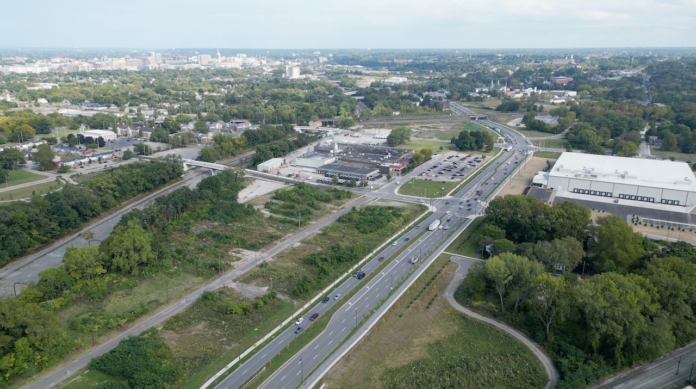
CLEVELAND, Ohio – City Hall expects to receive a $3.4 million federal grant to ensure the survival of trees along Opportunity Corridor and create a new system to better preserve and care for city-owned trees all across Cleveland.
Cleveland officials expected to receive word this week on whether they won the grant from the U. S Department of Agriculture Forest Service, but they said Monday they are feeling good about their chances and have received assurances that they are likely to win it.
The money from the Inflation Reduction Act comes as Cleveland continues its focus on taking better care of the city’s dwindling tree canopy. The five-year grant — according to Sustainability Director Sarah O’Keeffe and head of urban forestry, Jennifer Kipp — will give Cleveland new tools to do just that, especially in disadvantaged neighborhoods with little tree cover.
A portion of the grant money will specifically target the 700 young trees planted in 2021 and 2022 along Opportunity Corridor. Those trees aren’t poised for success, as is, and need to be revitalized so they can survive into the future and flourish, officials said.
Kipp, in a Monday City Council committee hearing, said the trees are suffering from poor soil conditions as a result of construction on the roadway. The soil is compacted and “full of bad debris,” Kipp said.
About $208,000 in grant money is set aside specifically for Opportunity Corridor. The city intends to have a contractor remediate the soil there and aerate the roots using a tool known as an “air knife.” Mulch beds will be added, and weeds will be removed. The money will also be used to provide steady watering, and conduct “young tree training,” which sets up the trees for success and less maintenance later in life.
Beyond Opportunity Corridor, Cleveland intends to use the grant to improve the way it cares for trees across the city.
About $1 million will be used to conduct a comprehensive inventory of all trees, and potential tree-planting sites, on all tree lawns. There are an estimated 90,000 tree lawn trees citywide, and an additional 30,000 sections that are vacant, where new trees could potentially be planted.
Using contracted arborists, all 120,000 trees or sites will be surveyed for soil conditions, current tree conditions and other related factors. The information will go into a GPS tracking system that can be paired with other city databases.
Once that’s in-hand, it will give city officials a roadmap, of sorts, with which they can provide more deliberate pruning and maintenance schedules.
The last such inventory is believed to have been conducted in the 90s, Kipp said. And the information currently available to city workers is “inaccurate and incomplete,” she said.
With better data, the city hopes to be more efficient with its small team of urban foresters. Ideally, future tree care can also be timed up with road projects, flood mitigation projects or other city work that impacts trees.
This plan, according to O’Keeffe, will provide a more deliberate alternative to the current system, which is essentially “bopping around the city from tree to tree emergencies.”
Other pieces of the grant will provide more training for city arborists and teach them how to update the inventory, so it remains current and useful in future years. It also will include a tree care management plan, which is expected to guide the city’s pruning and maintenance schedule going forward.
Once the inventory and management plans are complete, about $1.7 million in grant money will be put towards removing trees or pruning those that were identified as problems during the inventory process.
